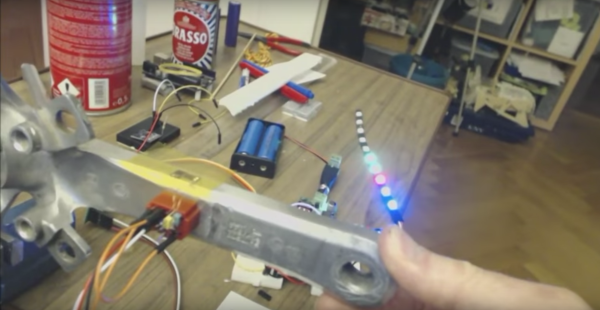An exciting aspect of the trend in single board computers towards ever faster processors has been the clever use of their digital I/O with DSP software to synthesize complex signals in the analogue and RF domains that would previously have required specialist hardware. When we use a Raspberry Pi to poll a sensor or flash an LED it’s easy to forget just how much raw processing power we have at our fingertips.
One of the more recent seemingly impossible feats of signal synthesis on a Raspberry Pi comes from [Evariste Courjaud, F5OEO]. He’s created a DVB-S digital TV transmitter that produces a usable output direct from a GPIO pin, with none of the external modulators that were a feature of previous efforts required. (It is worth pointing out though that for legal transmission a filter would be necessary.)
DVB is a collection of digital TV standards used in most of the world except China and the Americas. DVB-S is the satellite version of DVB, and differs from its terrestrial counterpart in the modulation scheme it employs. [Evariste] is using it because it has found favor as a digital mode in amateur radio.
This isn’t the first piece of [F5OEO] software creating useful radio modes from a GPIO pin. He’s also generated SSB, AM, and SSTV from his Pi, something which a lot of us in the amateur radio community have found very useful indeed.
We’ve covered digital TV creation quite a few times in the past on these pages, from the first achievement using a PC VGA card almost a decade ago to more recent Raspberry Pi transmitters using a USB dongle and a home-built modulator on the GPIO pins. Clever signal trickery from digital I/O doesn’t stop there though, we recently featured an astoundingly clever wired Ethernet hack on an ESP8266, and we’ve seen several VHF NTSC transmitters on platforms ranging from the ESP to even an ATtiny85.
Thanks [SopaXorzTaker] for the nudge to finally feature this one.



















